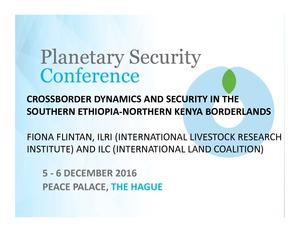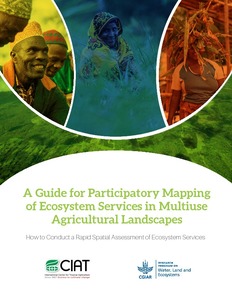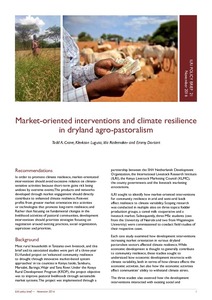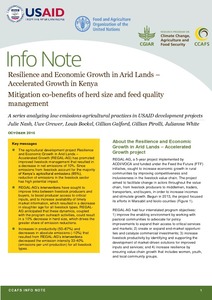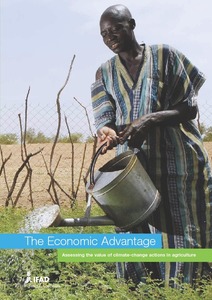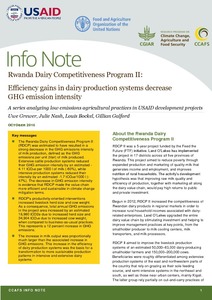Delivering insurance to protect livestock wealth and livelihoods in the drylands of Kenya
This filmed interview of Hassan Bashir, group chief executive of Takaful Africa Group, was prepared for the ILRI-World Bank Group side event at the Borlaug Dialogue, Des Moines, Iowa, 12 October 2016.
Rapport de la vingt-deuxième session de la Commission des forêts et des parcours pour le Proche-Orient
Meeting Name: Near East Forestry and Range Commission (NEFRC)
Meeting symbol/code: FO:NEFRC/2015/REP
Session: Sess. 22
Report of the 22nd Session of the Near East Forestry and Range Commission
Meeting Name: Near East Forestry and Range Commission (NEFRC)
Meeting symbol/code: FO:NEFRC/2015/REP
Session: Sess. 22
Rangelands of Pakistan: Current status, threats and potential
The rangeland resources of Pakistan constitute around 60 percent of the land area of Pakistan. This resource supports millions of livestock which are important for the livelihood food security and nutrition of poor rural people. Currently the resource is in a deteriorating condition and the current productivity is far less than its potential.
A Guide for participatory mapping of ecosystem services in multiuse agricultural landscapes: How to conduct a rapid spatial assessment of ecosystem services
This guide presents a step-by-step approach in using a participatory mapping method with community members to identify and map ecosystem services and changes in their supply across multiuse agricultural landscapes. Non-governmental organizations (NGOs), government agencies and researchers can use this approach to learn from communities about how they use and access natural resources.
Pastoralism and Land-Tenure Change in Kenya: The Failure of Customary Institutions
Until recently, the Pokot in the highlands of the Baringo area in Kenya have practised semi-nomadic pastoralism. Today they are rapidly sedentarizing and in many areas suitable for farming, they are adopting rain-fed agriculture.
Market-oriented interventions and climate resilience in dryland agro-pastoralism
Nutrition guidelines for community extension workers
Resilience and Economic Growth in Arid Lands - Accelerated Growth in Kenya: Mitigation co-benefits of herd size and feed quality management
The agricultural development project Resilience and Economic Growth in Arid Lands – Accelerated Growth (REGAL-AG) has promoted improved livestock management that resulted in a decrease in net emissions of 10%. Since emissions from livestock account for the majority of Kenya’s agricultural emissions (95%), reduction of emissions in the livestock sector has high potential impact.
The Economic Advantage: Assessing the value of climate-change actions in agriculture
This report is aimed at readers who seek to build economic evidence in support of the inclusion of actions on agriculture in climate change plans and programmes, particularly at the national level under the umbrella of nationally determined contributions (NDCs) to the December 2015 Paris Agreement, which aims to restrict a rise in global temperatures and manage risks.
Rwanda Dairy Competitiveness Program II: Efficiency gains in dairy production systems decrease GHG emission intensity
? The Rwanda Dairy Competitiveness Program II
(RDCP) was estimated to have resulted in a
strong decrease in the GHG emissions intensity
of milk production, defined as the GHG
emissions per unit (liter) of milk produced.
Extensive cattle production systems reduced
their GHG emission intensity by an estimated -

